2-Isobutyrylcyclohexanone

2-Isobutyrylcyclohexanone structure
|
Common Name | 2-Isobutyrylcyclohexanone | ||
|---|---|---|---|---|
| CAS Number | 39207-65-3 | Molecular Weight | 168.233 | |
| Density | 1.0±0.1 g/cm3 | Boiling Point | 265.9±23.0 °C at 760 mmHg | |
| Molecular Formula | C10H16O2 | Melting Point | 38°C | |
| MSDS | Chinese USA | Flash Point | 98.4±19.6 °C | |
| Symbol |

GHS07 |
Signal Word | Warning | |
| Name | 2-Isobutyrylcyclohexanone |
|---|---|
| Synonym | More Synonyms |
| Density | 1.0±0.1 g/cm3 |
|---|---|
| Boiling Point | 265.9±23.0 °C at 760 mmHg |
| Melting Point | 38°C |
| Molecular Formula | C10H16O2 |
| Molecular Weight | 168.233 |
| Flash Point | 98.4±19.6 °C |
| Exact Mass | 168.115036 |
| PSA | 34.14000 |
| LogP | 0.96 |
| Vapour Pressure | 0.0±0.5 mmHg at 25°C |
| Index of Refraction | 1.464 |
| InChIKey | PFOYYSGBGILOQZ-UHFFFAOYSA-N |
| SMILES | CC(C)C(=O)C1CCCCC1=O |
|
Section 1: Product Identification Chemical Name:2-Isobutyrylcyclohexanone, 96% (~96% enol form) CAS Registry Number:39207-65-3 Formula:C10H16O2 EINECS Number:none Chemical Family:organic compound Synonym:none
Section 2: Composition and Information on Ingredients IngredientCAS NumberPercentACGIH (TWA)OSHA (PEL) Title compound39207-65-3100%no datano data Section 3: Hazards Identification Emergency Overview:Irritating to skin, eyes and respiratory tract. Primary Routes of Exposure:Ingestion, inhalation Eye Contact:Causes slight to mild irritation of the eyes. Skin Contact:Causes slight to mild irritation of the skin. Inhalation:Irritating to the nose, mucous membranes and respiratory tract. Ingestion:No information available on the physiological effects of ingestion. May be harmful if swallowed. Acute Health Affects:Irritating to skin, eyes and respiratory tract. Chronic Health Affects:No information on long-term chronic effects. NTP:No IARC:No OSHA:No SECTION 4: First Aid Measures Immediately flush the eyes with copious amounts of water for at least 10-15 minutes. A victim may need Eye Exposure: assistance in keeping their eye lids open. Get immediate medical attention. Wash the affected area with water. Remove contaminated clothes if necessary. Seek medical assistance if Skin Exposure: irritation persists. Remove the victim to fresh air. Closely monitor the victim for signs of respiratory problems, such as difficulty Inhalation: in breathing, coughing, wheezing, or pain. In such cases seek immediate medical assistance. Seek medical attention immediately. Keep the victim calm. Give the victim water (only if conscious). Induce Ingestion: vomiting only if directed by medical personnel. SECTION 5: Fire Fighting Measures Flash Point:219.2°F Autoignition Temperature:no data Explosion Limits:no data Extinguishing Medium:carbon dioxide, dry powder or foam If this product is involved in a fire, fire fighters should be equipped with a NIOSH approved positive pressure Special Fire Fighting Procedures: self-contained breathing apparatus and full protective clothing. Hazardous Combustion andIf involved in a fire this material may emit irritating fumes. Decomposion Products: Unusual Fire or Explosion Hazards: No unusual fire or explosion hazards. SECTION 6: Accidental Release Measures Spill and Leak Procedures:Small spills can be mixed with vermiculite or sodium carbonate and swept up. SECTION 7: Handling and Storage Handling and Storage:Store in a tightly sealed container. Keep in a cool, dry, well ventilated place. SECTION 8: Exposure Controls and Personal Protection Eye Protection:Always wear approved safety glasses when handling a chemical substance in the laboratory. Skin Protection:Wear protective clothing and gloves. Ventilation:Handle the material in an efficient fume hood. If ventilation is not available a respirator should be worn. The use of respirators requires a Respirator Respirator: Protection Program to be in compliance with 29 CFR 1910.134. Ventilation:Handle the material in an efficient fume hood. Additional Protection:No additional protection required. SECTION 9: Physical and Chemical Properties Color and Form:colorless liquid Molecular Weight:168.23 Melting Point:38° Boiling Point:no data Vapor Pressure:no data Specific Gravity:no data Odor:not determined Solubility in Water:insoluble SECTION 10: Stability and Reactivity Stability:air and moisture stable Hazardous Polymerization:no hazardous polymerization Conditions to Avoid:none Incompatibility:oxidizing agents Decomposition Products:carbon monoxide, carbon dioxide, organic fumes SECTION 11: Toxicological Information RTECS Data:No information available in the RTECS files. Carcinogenic Effects:no data Mutagenic Effects:no data Tetratogenic Effects:no data SECTION 12: Ecological Information Ecological Information:No information available SECTION 13: Disposal Considerations Disposal:Dispose of according to local, state and federal regulations. SECTION 14: Transportation Shipping Name (CFR):Non-hazardous Hazard Class (CFR):NA Additional Hazard Class (CFR):NA Packaging Group (CFR):NA UN ID Number (CFR):NA Shipping Name (IATA):Non-hazardous Hazard Class (IATA):NA Additional Hazard Class (IATA):NA Packaging Group (IATA):NA UN ID Number (IATA):NA SECTION 15: Regulatory Information TSCA:Not listed in the TSCA inventory SARA (Title 313):Title compound not listed Second Ingredient:none SECTION 16 - ADDITIONAL INFORMATION N/A |
| Symbol |

GHS07 |
|---|---|
| Signal Word | Warning |
| Hazard Statements | H302-H319 |
| Precautionary Statements | P305 + P351 + P338 |
| Personal Protective Equipment | Eyeshields;Faceshields;full-face respirator (US);Gloves;multi-purpose combination respirator cartridge (US);type ABEK (EN14387) respirator filter |
| Hazard Codes | Xn |
| Risk Phrases | R22;R36 |
| Safety Phrases | S26 |
| RIDADR | NONH for all modes of transport |
| HS Code | 2914299000 |
|
~38% 
2-Isobutyrylcyc... CAS#:39207-65-3 |
| Literature: Corr, Michael J.; Roydhouse, Mark D.; Gibson, Kirsty F.; Zhou, Sheng-Ze; Kennedy, Alan R.; Murphy, John A. Journal of the American Chemical Society, 2009 , vol. 131, # 49 p. 17980 - 17985 |
|
~40% 
2-Isobutyrylcyc... CAS#:39207-65-3 |
| Literature: Shafir, Alexandr; Buchwald, Stephen L. Journal of the American Chemical Society, 2006 , vol. 128, # 27 p. 8742 - 8743 |
|
~% 
2-Isobutyrylcyc... CAS#:39207-65-3 |
| Literature: Murray, Ewan J.; Crowley, Rebecca C.; Truman, Alex; Clarke, Simon R.; Cottam, James A.; Jadhav, Gopal P.; Steele, Victoria R.; O'Shea, Paul; Lindholm, Catharina; Cockayne, Alan; Chhabra, Siri Ram; Chan, Weng C.; Williams, Paul Journal of Medicinal Chemistry, 2014 , vol. 57, # 6 p. 2813 - 2819 |
|
~82% 
2-Isobutyrylcyc... CAS#:39207-65-3 |
| Literature: Baudoux, Dominique; Fuks, Robert Bulletin des Societes Chimiques Belges, 1984 , vol. 93, # 11 p. 1009 - 1018 |
| Precursor 4 | |
|---|---|
| DownStream 5 | |
| HS Code | 2914299000 |
|---|---|
| Summary | 2914299000. other cyclanic, cyclenic or cyclotherpenic ketones without other oxygen function. VAT:17.0%. Tax rebate rate:13.0%. . MFN tariff:5.5%. General tariff:30.0% |
|
An alternative to the classical α-arylation: the transfer of an intact 2-iodoaryl from ArI(O₂CCF₃)₂.
Angew. Chem. Int. Ed. Engl. 53(42) , 11298-301, (2014) The α-arylation of carbonyl compounds is generally accomplished under basic conditions, both under metal catalysis and via aryl transfer from the diaryl λ(3)-iodanes. Here, we describe an alternative ... |
| 2-Isobutyrylcyclohexanone |
| Cyclohexanone, 2-(2-methyl-1-oxopropyl)- |
| MFCD00466185 |
| 2-(2-methylpropanoyl)cyclohexan-1-one |


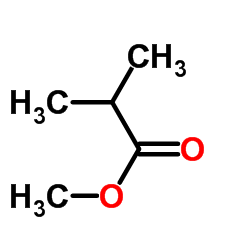
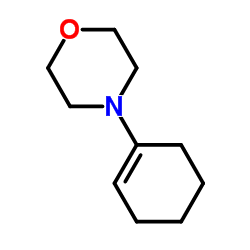

 CAS#:5963-14-4
CAS#:5963-14-4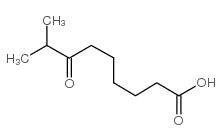 CAS#:55277-54-8
CAS#:55277-54-8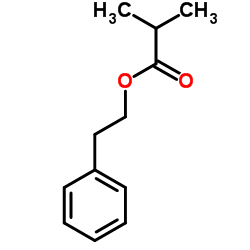 CAS#:103-48-0
CAS#:103-48-0 CAS#:75379-01-0
CAS#:75379-01-0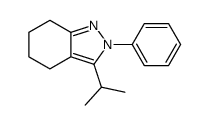 CAS#:91266-46-5
CAS#:91266-46-5
